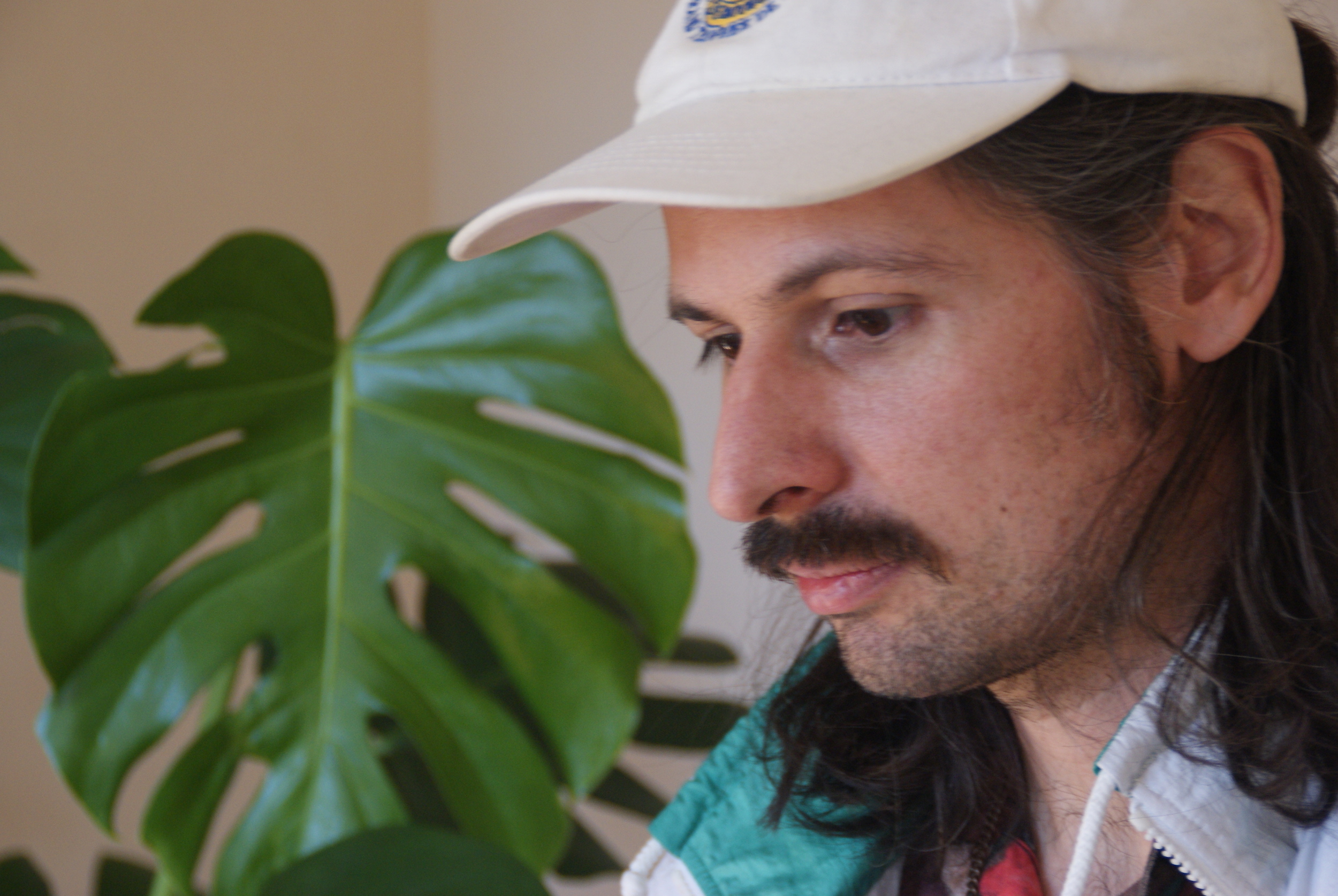“Music is how I communicate with the universe,” Maxime Primault says in a revealing interview with Shelter Press co-founder Bartolomé Sanson. “It’s my DNA. And music allows you to bring people along on the journey.”
Results may vary of course, depending on who’s behind the wheel and where they’re driving. While some trips are worth taking because they tell a proper story or tap into something deep within us, others stick to a path that feels a little too familiar. Voyage Sacrifice is not one of those records. It finds Primault’s Black Zone Magick Chant project leading us down a winding road that’s frightening at first and deeply fulfilling by its final curtain call.
In the following exclusive feature, the producer goes into great detail about the concepts and musical cues within his magnum opus, which hits shops through Shelter Press today….
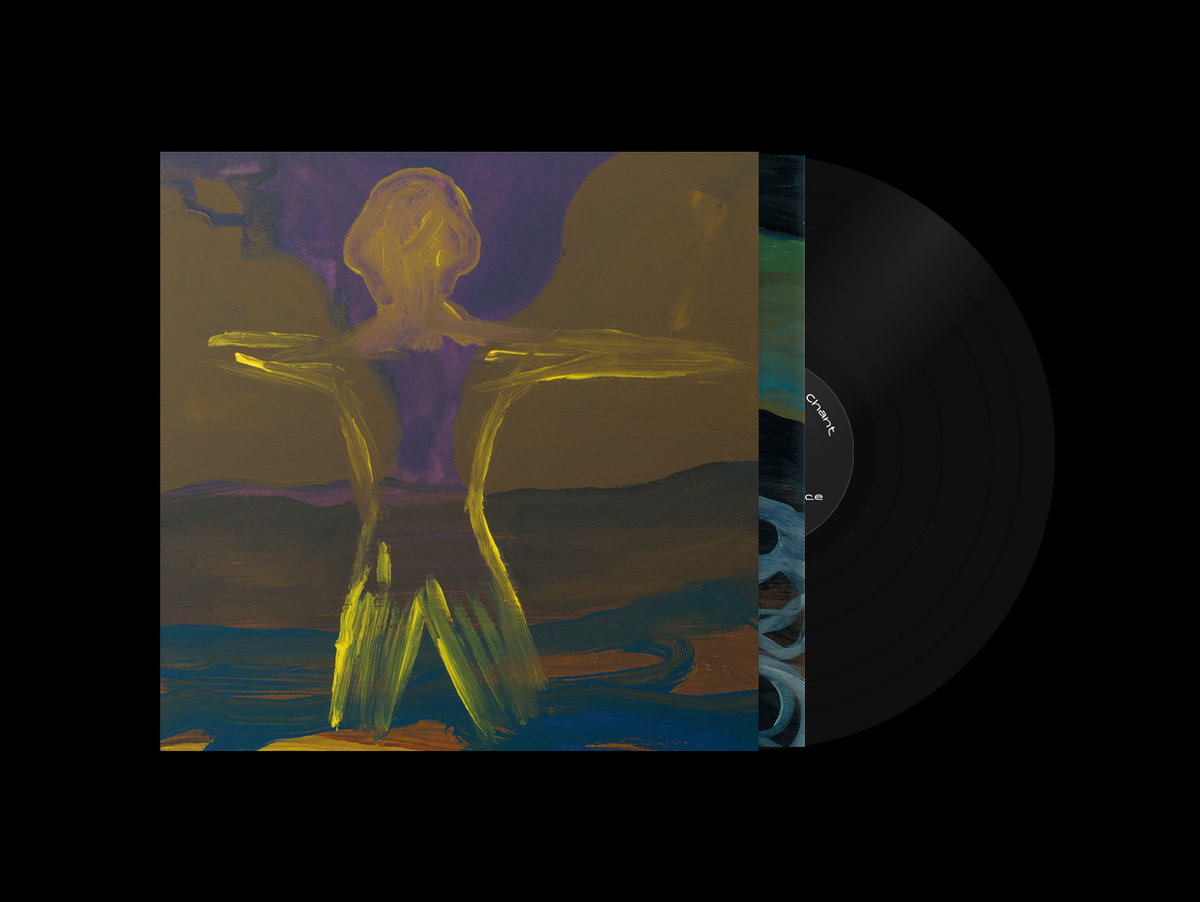
“LIGHTLESS MOUNTAIN”
This one is, of course, the gateway. It was really thought as a long introduction, much more than a typical ‘intro’ as done on many records (not a judgement). It’s like the ascension. Like what happens in between the moment you take a pill or ingest drugs and the moment when you start to feel the effects. There is a whole process that is inevitable, almost invisible, that starts the second you swallow the pill. Well this track is kinda like that; it’s very atmospheric, lots of things are mentioned, but only briefly. We see different landscapes, different doors, but no, we do not enter yet. It’s like seeing your cards before the game starts, there are options and many possibilities offered to you and the game is gonna lead you to play in a certain way, which could have been very different.
So this piece is 10 minutes long, and when it ends, you only know one thing—you know that you don’t know where you are and where all this is going. If you paid attention—if you listened—then your senses are sharpened and you are getting ready for the experience. You’ve heard many things: weird distant bells, distorted Buddhist monks chanting, the feedback from twin filters, even a crocodile growl slowed down and reversed. Some of it you recognize, some of it not, but it all has an impact on your subconscious. You’re intrigued, and maybe a little scared, because it is pretty dark and intense. Black magick. Every magical ritual starts with an invocation. And a record like this one, that is meant to be an experience, has to slowly build a vibe. Almost like a hypnotic process. Leading you to a specific place you need to be in to enjoy and experience it the proper way.
It ends with almost one minute of a very simple sound, a kind of drone made with simple sine waves interacting with each other, and I’m very proud of this because my entire discography is very packed, there is nothing close to silence, it’s all layers on top of layers, tracks maxed out from start to finish. It’s very difficult for me to decide that there’s gonna be a minute of almost nothing. Because there are so many possibilities, I could add so much. But this one was clearly a case of « less is more ». Having this little breathing moment works wonders after the almost suffocating introduction. It is nothing noticeable, it is the opposite of showing off, but I’m very proud of this little detail. I think it’s the sign of a maturity and a consciousness that comes with aging, both as an artist and as a human.
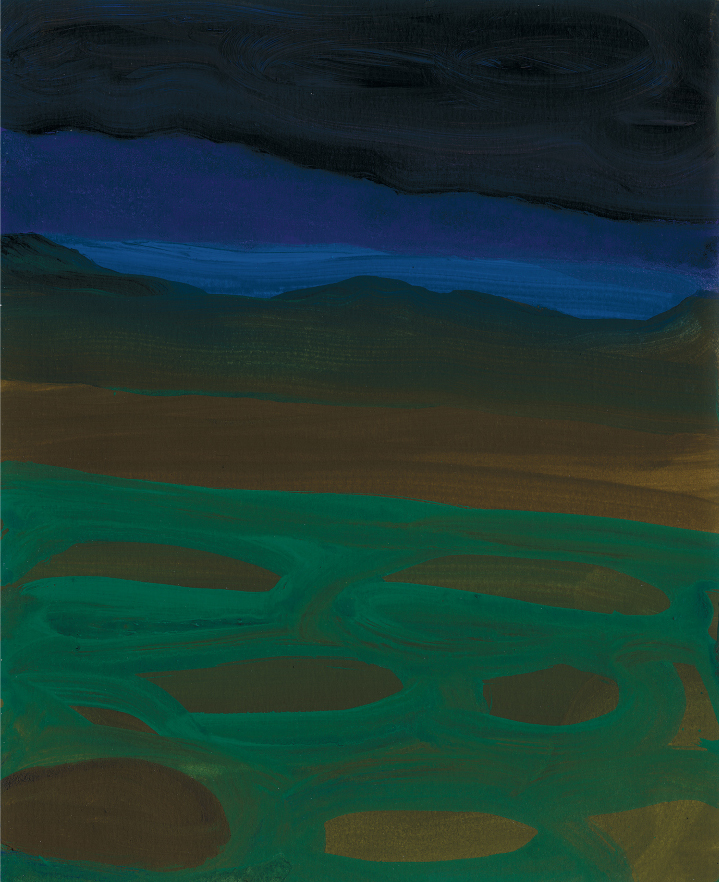
“INCINERATION OF THOUGHTS”
This one is a lot more ‘musical’ than the previous one. It has a structure, a rhythm. It’s been a key to this record, really; when I made this piece I felt like I was onto something and it then did set the tone for the rest of the album.
This is a typical serendipity story. It all began when I was doing a setup change in one of my modular synth cases so that I could run external samples in stereo through two different filters—one for the left channel, and one for the right channel. So in order to test the thing, I very quickly and randomly made a hand drum loop without thinking about it, with no other purpose than to see if the process was working, I then thought, ‘Well this is interesting.’ I recorded one take and then started to add layers and layers and everything was working on the first take. I ended up improvising with vocal samples on a granular sampler, and that was all done in one take too; it was all fit together and worked. This was the first eight minutes or so of the track. And it was all very intuitive. A bit later, when the track listing was taking shape and I had the whole record in mind, I realized something was missing: a kind of bridge from the A to the B side. That’s when I did add those extra three minutes of gamelan-like bells and tiger roars you can hear at the end. Again, very spontaneously, the (very simple) bell melody was played and found on the spot while recording, all went very smoothly. And those tiger sounds were another cornerstone.
The project was already taking a very spiritual and organic turn, and I thought something like ‘this record needs to have everything in it: human sounds, electronic sounds, animal sounds, vegetal sounds, geological sounds. Like those voodoo sculptures with blood and spit and semen and earth and shit mixed.’ So I added those animal sounds; most of them are pretty hidden, so it acts on your subconscious. But the tiger sound is such a beautiful and lovely sound; it inspires respect and humility, I feel. I hid a bit of it before it starts to be really noticeable. My theory is that those big cats have been our enemies for a long time. As a species, many humans or hominids have been hunted and eaten by big cats in prehistorical times, so I am sure that in our DNA there is something that links those sounds to a fear response in our deep brain. I wanted to experiment with it and see if the listener would somehow feel some kind of discomfort. Can I act, in a subliminal way, on emotions that are ‘deeper’ or more primitive than the aesthetic emotion you usually target with music? Many similar attempts are spread throughout this record, but I’m not gonna give them all out; otherwise it’s not gonna work. As they say, a magician doesn’t reveal his tricks.
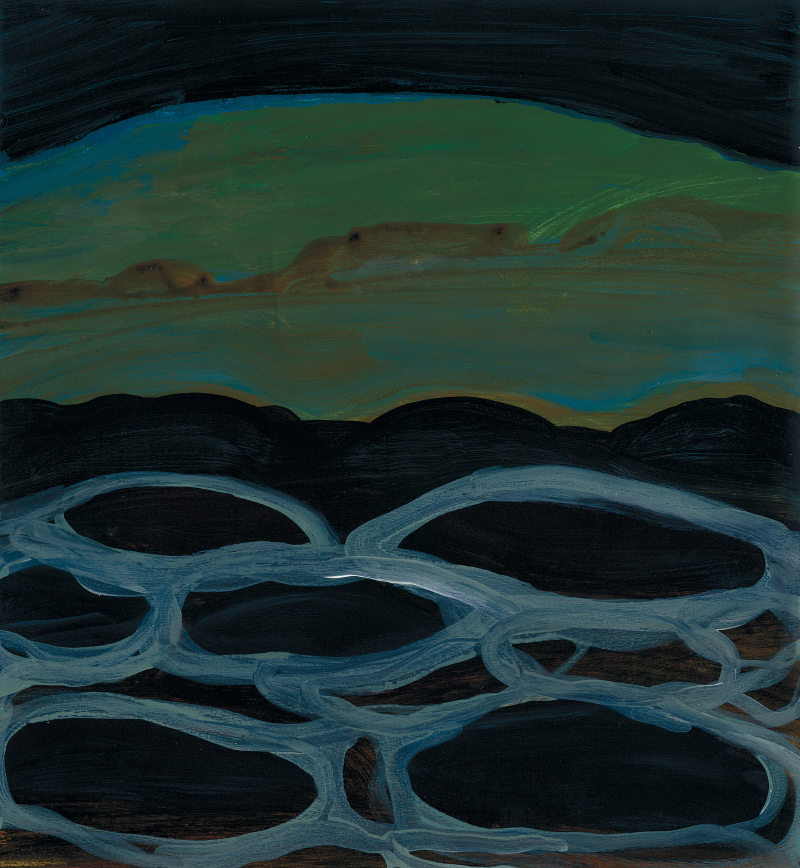
The next one is pressed as one long track on the record but it was actually two different tracks in the composing process (hence the two part title). Although one is morphing into the other to a point where it’s difficult to realize, I’ll separate them for this exercise….
“WHERE WILL WE MEET WHEN OUR ASHES ARE SPREAD IN THE WIND?”
This is roughly the first 15 minutes of this side-long piece. It started with a simple melody that I got while patching my modular synth and trying to get some organic sounds out of it. Some people call this ‘physical modeling’. It’s like trying to reproduce natural sounds. I like to synthesize flute-like sounds, and on this case, I ended up with this half-flute, half-choir kinda sound that I really liked. It felt very emotional considering it’s coming out of a bunch of wires plugged into little metal boxes. It felt very relaxing too: a New Age kinda vibe, a welcome moment of peace that works perfect for the opening of the B-side, after the intensity of the A-side. I recorded two different takes of that patch (different tunings), then I put them together and it became the backbone of this piece.
Then it was all about finding how to evolve from there. It’s been a trial and error process, adding small, barely there electro-acoustic sounds first, then this droning voice coming after a few minutes that really gives another dimension. It all started to really feel good, but then something was still missing. We made a test listening with Bartolomé from Shelter Press something like a year ago and we both had the same feeling: This will probably be the main piece of the album but something is missing. Back then I was working on a lot of dub-influenced music and I really wanted to separate that from this ambient record. From the start, I decided this album would have no drum machine, no beats. It was a good way for me not to fall into the ‘add more and more’ void. But then I thought the missing element was probably a bass, and I just tried the most simple bass that would have a little dub vibe and a Krautrock kinda feeling. It worked. I really restrained from doing what I do with dub pieces, which is working on the bass a lot so it’s most awesome and groovy and powerful as it can be. Not this time; it had to be the most simple bass line I could live with. Very discreet and humble, not showing off, just here to serve all the other elements around. In the end it even gave a weird hippy vibe to the whole track.
After talking a bit more with Bartolomé we thought it was best to not separate this track from the following one so I added a bridge, a very similar idea to what I talked about for the A-side. I recorded a bunch of electronic noises, added some organic recordings, animal sounds, lots of stuff, with a bit more intensity than what I was going for from the beginning of the B-side because it shouldn’t be all peaceful and bright, you know? It had to remain linked to the darkness of the A-side. The A-side is mostly dark, but contains brightness as well; the B-side is mostly bright, but needed darkness. The whole thing is like Yin Yang in an infinity mirror.
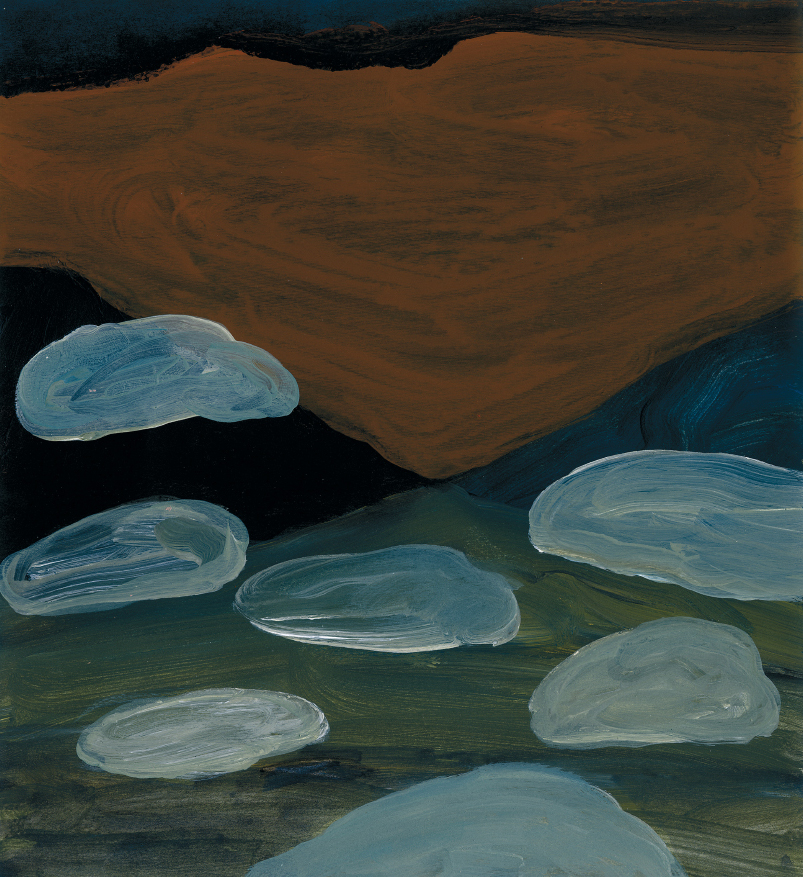
“CRYSTAL MONASTERY”
This track was the only one I mostly composed for another purpose at first, when I had to create an ambient live set for a special event in Paris organized by both Editions Gravats (home of my past couple of records) and Shelter Press. This was the closing piece of the set and it was really emotional and powerful. I actually had it in mind to use it for the record, which I was already offered to do by the label back then but hadn’t started at that point. But I always have a very hard time recording stuff that has been created for a live set because it’s such a different way of doing things. Working on a live composition I make sure there are lots of different paths I can use, adjust, improvise around, so that if I get to play it a few times I don’t get bored; I can still be surprised and have fun. When it’s time to put in on a record you have to choose one path, and one path only. Forever. So my (annoying) tendency is to try to fit as many ideas from many different possible paths and then it just doesn’t work. I started to record it and then I kinda gave up on it, left it halfway done. I recorded a totally different track for the end of the record that was really good and felt fresh to my ear compared to this track I created it before really working on the record. I still had it in my heart though and basically offered both endings to Bartolomé. He convinced me the older one was what made sense and I pretty quickly felt he was right. That gave me the motivation to come back to it and finish it.
It was meant to end a pretty epic live show and it was a perfect ending to a pretty epic record. It was the proper reward needed after this long and demanding mental journey the listener went through. So I then finished it, modifying it for its new purpose. I went back on every other track of the record to put things here and there that would make sense for the album as a whole, like those bridges I mentioned earlier. It felt really steady then and made a lot of sense—everything was in its right place. The record was a true journey, starting from a very dark place and finishing with the trumpets of the bright angels welcoming you into heaven. As Bartolomé said many times when we were doing listening sessions, if you listen to the very start of the record and then switch to the very end it feels like it’s two different records, or two different artists, but the path connecting those points really makes sense. This record is not a collection of tracks; it is a whole painting. Everything is linked. There are many dimensions, time traveling, teleportation—every point leads to any other point. It’s like in Men In Black, when there is a whole galaxy in the cat’s necklace. There is a whole dense universe inside of this record for you to discover. Dive in.
